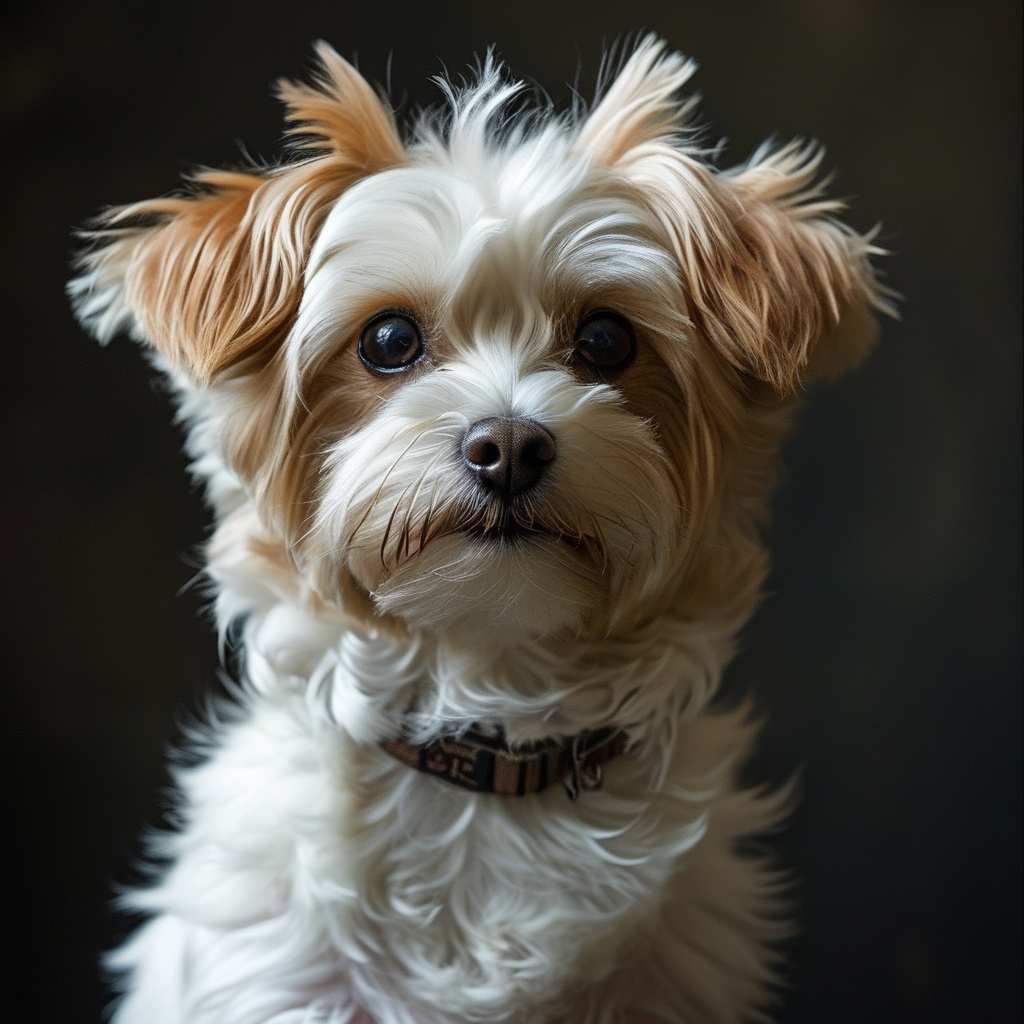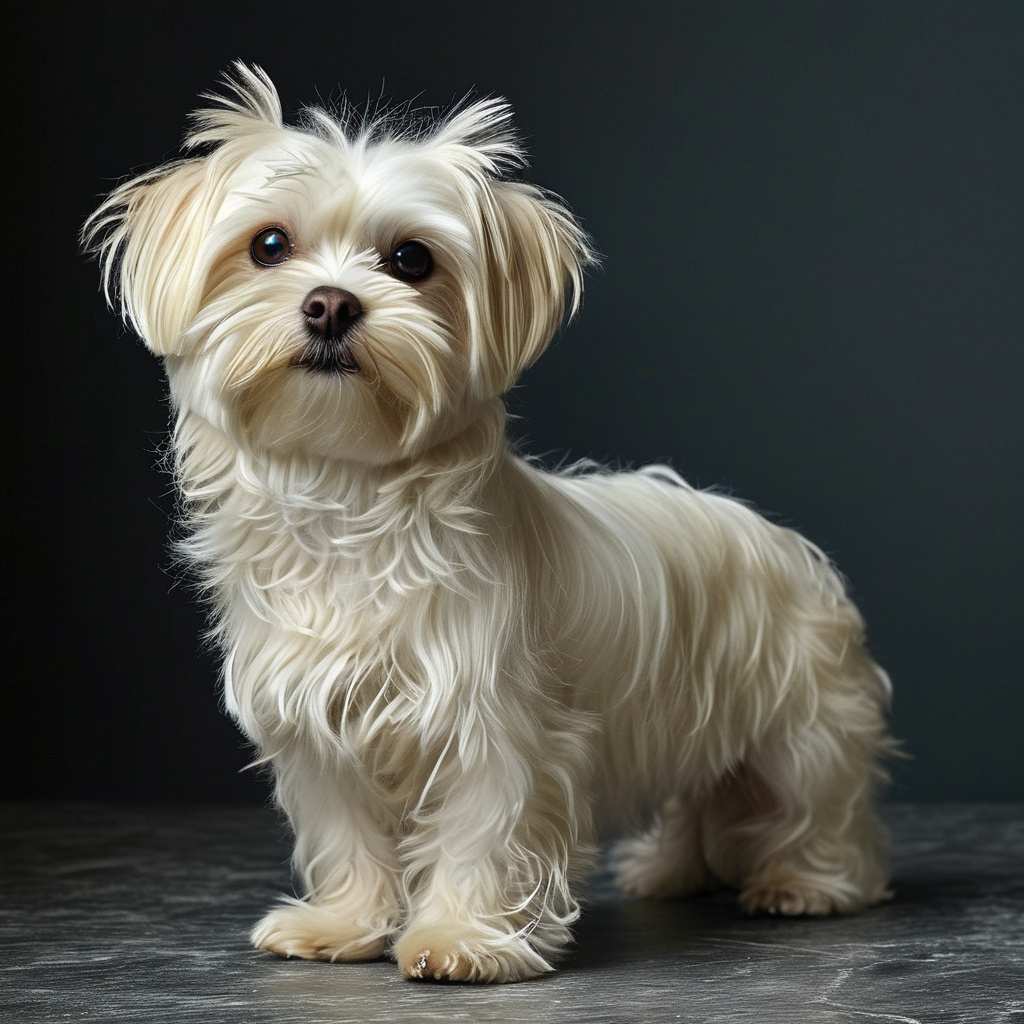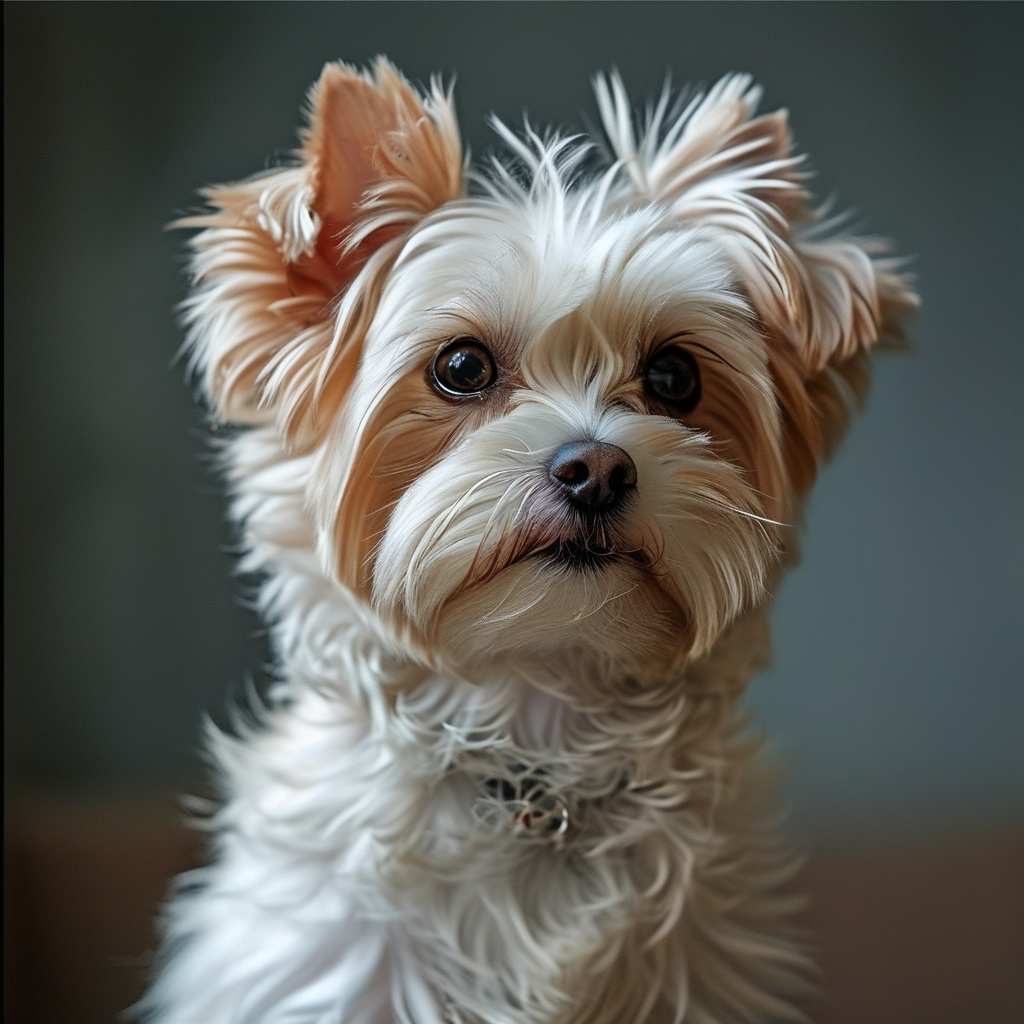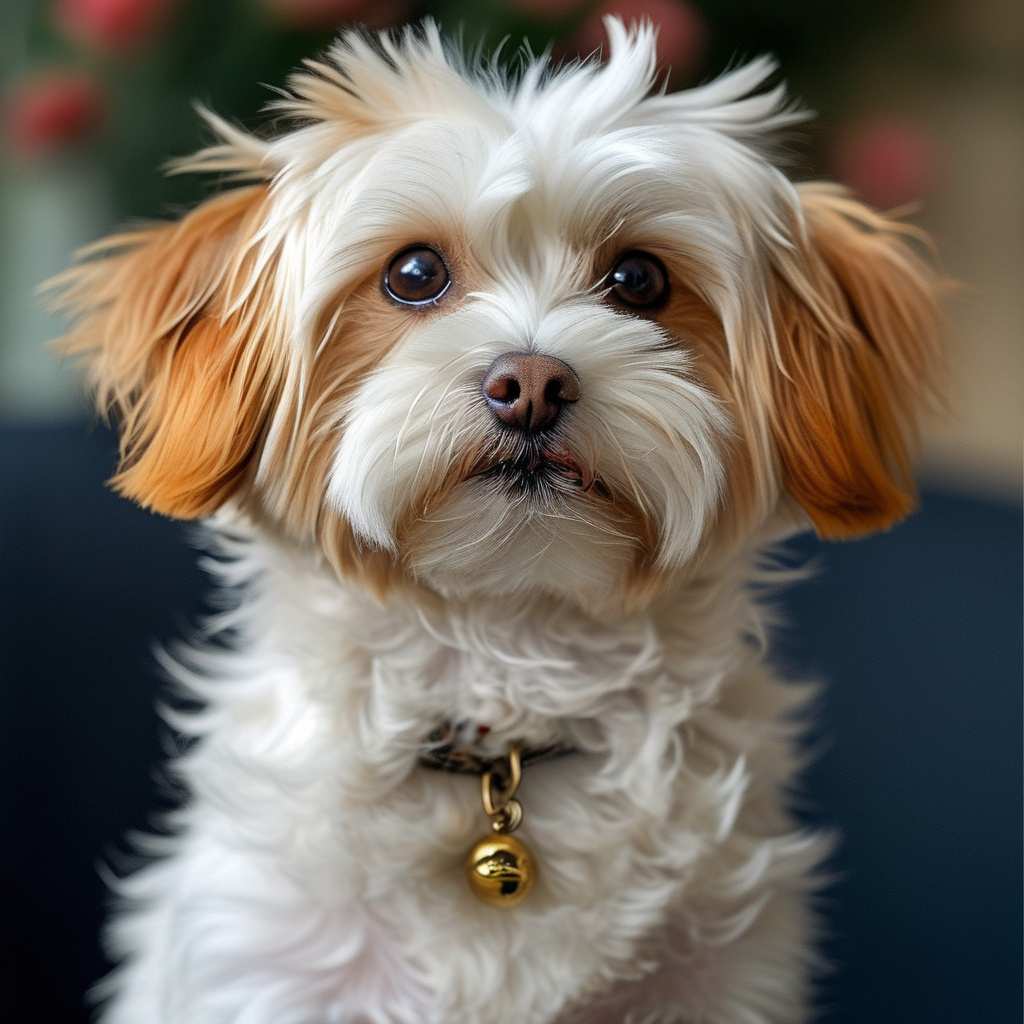Introduction: The Maltese dog, with its illustrious history dating back to the 9th century BC, represents one of the most enduring and cherished companion breeds in canine history. From ancient Egyptian tombs to European royal courts, these elegant white-coated dogs have captured hearts across millennia with their distinctive appearance and charming personality. This comprehensive examination explores the breed’s unique characteristics, including their meticulous grooming requirements, health considerations, and temperamental traits, while highlighting the factors that have contributed to their remarkable longevity as a beloved companion breed in human society.
The Maltese is one of the oldest breeds of dog. The history of the Maltese dog can be traced back to ancient times, with the earliest documented references dating as early as the 9th century BC. The Maltese have a history of winning the hearts of people from all walks of life. The canines assisted the inhabitants of the settlements in their efforts to control the rodent population, which included mice and other small rodents. The nobility found the dogs to be a source of companionship and warmth, while artists were inspired by these animals to create. The Maltese is a common subject in paintings and sculptures and has even inspired poems. What factors contributed to the Maltese becoming such a popular breed?
Related Post: Catnip and Feline Euphoria: A Closer Look at the Science Behind the Magic Herb
In the present era, Maltese dogs serve as companion animals. The breed first appeared in Poland around 1320, but it was during the interwar period that it truly flourished. The Maltese were significantly weakened by the effects of World War II, but following the conclusion of the war, the breed began to recuperate and has since demonstrated unparalleled resilience.
The Maltese are distinguished by black eyes, a black nose, and black lips, which combine to create a pleasant and almost childlike expression.
 The FCI model categorizes small, white, and fluffy dogs as belonging to the Bichon group. Males are slightly larger and heavier than females. In general, the body weight of the Maltese should fall within the range of 2–4 kg, while the height at the withers (the highest point of the dog’s trunk, situated approximately at the level of the shoulder blades) should range from 20 to 25 cm. A distinctive feature of the Maltese is the black, perfectly round eye, which contrasts starkly with the white hair. Additionally, the nose, lips, eyelids, and paw pads are also black. This combination of characteristics endows the Maltese with a notably endearing and appealing appearance. The muzzle is of medium length or slightly shorter. The ears are triangular in shape and positioned at a slight elevation. The overall breadth of the Maltese head is notable, as is the length of the neck. The silhouette is rectangular with a straight and long back and a high-set, curved tail.
The FCI model categorizes small, white, and fluffy dogs as belonging to the Bichon group. Males are slightly larger and heavier than females. In general, the body weight of the Maltese should fall within the range of 2–4 kg, while the height at the withers (the highest point of the dog’s trunk, situated approximately at the level of the shoulder blades) should range from 20 to 25 cm. A distinctive feature of the Maltese is the black, perfectly round eye, which contrasts starkly with the white hair. Additionally, the nose, lips, eyelids, and paw pads are also black. This combination of characteristics endows the Maltese with a notably endearing and appealing appearance. The muzzle is of medium length or slightly shorter. The ears are triangular in shape and positioned at a slight elevation. The overall breadth of the Maltese head is notable, as is the length of the neck. The silhouette is rectangular with a straight and long back and a high-set, curved tail.
Related Post: How to Choose and Introduce Dog Clothing: A Guide for Pet Owners
It is inadvisable to attempt to further reduce the size of the Maltese, as they are already quite diminutive. It is important to note that miniature Maltese can be prone to a number of serious health issues. The body weight and height of Maltese dogs should adhere to the standards set forth by the relevant authorities.
The Maltese’s distinctive coat is its most notable physical attribute, characterized by its density, length and white hue. Moreover, only a light ivory shade is permitted. Any other colouration will result in the exclusion of the animal from the breed. The hair on the eyebrows resembles eyelashes, thereby accentuating the canine’s inherent charm. The coat of this breed should be characterized by a high degree of gloss, silkiness, and smoothness. The hair is notably dense and heavy. The presence of curly or wavy hair is not permitted. A slight curl is permitted on the paws of puppies.
Related Post: The Unique Charm of Thai Cats: A Return to the Original Siamese Look
Grooming
Regular grooming is necessary for Maltese fur. The absence of an undercoat results in minimal shedding. However, the hair structure exhibits a proclivity to trap debris when the animal is in motion. It is recommended that Maltese dogs be bathed at least once a month, and often even every two weeks. It is advisable to use shampoos formulated for sensitive skin and white fur. Additionally, the use of moisturizing shampoos is recommended. It is recommended that a thorough combing of the dog be conducted prior to each bath. The shampoo should then be applied and gently massaged in a downward motion to prevent the wet fur from knotting. It is recommended that the hair be towel-dried, followed by blow-drying with a hairdryer while combing.
 It is incumbent upon the Maltese’s owner to prepare for the daily combing of the dog. It is advisable to familiarise the dog with the comb from an early age. It is advised that a metal comb with narrow teeth or a poodle brush be used subsequent to combing. Additionally, high-quality scissors may be procured for the purpose of trimming the coat.
It is incumbent upon the Maltese’s owner to prepare for the daily combing of the dog. It is advisable to familiarise the dog with the comb from an early age. It is advised that a metal comb with narrow teeth or a poodle brush be used subsequent to combing. Additionally, high-quality scissors may be procured for the purpose of trimming the coat.
Related Post: Understanding Cat Diarrhoea: Causes, Remedies, and When to Seek Help
The hair of a Maltese can be shortened or removed without concern that the remaining hair will grow back in an irregular pattern.
Furthermore, the daily care regimen should include the cleaning of the eyes. It is recommended that the animal’s claws be trimmed on a periodic basis, and that the hair from its ears be removed.
Maltese dogs are known to thrive on a high level of care and attention. The bed for a dog of this breed should be of a soft, fluffy material and of a height that allows the Maltese to enter it without difficulty. It is advisable to maintain surveillance of the Maltese’s bed, as these canines tend to seek proximity to humans, even during periods of repose.
Maintaining the health and condition of a long coat requires significant care and attention.
 The Maltese are regarded as an exemplar of canine health and longevity. With appropriate care, the lifespan of Maltese can reach 20 years, and good health and vitality can be maintained throughout. The breed is not known to have a particular tendency towards genetic diseases. Nevertheless, it is advisable to monitor their weight, given their proclivity to consume large quantities of food. The selection of appropriate nutrition is an essential component of maintaining optimal health and beauty in dogs. It is recommended that Maltese dogs be provided with a diet of high-quality, digestible food based on meat. It is of great importance to maintain a balanced diet, including an adequate intake of vitamins and omega acids, which contribute to the optimal appearance and condition of the coat. It should be noted that Maltese dogs are sensitive to food allergens and may develop such allergies. To circumvent this issue, it is therefore advisable to provide the puppy with a high-quality diet. It is imperative that human food is not provided to Maltese dogs, as it can result in adverse health consequences, including weight gain, gastric distress, and even more serious medical conditions. Proper nutrition, as opposed to overfeeding, is also conducive to maintaining the health of the skeletal system, particularly the joints. As a small breed dog, the Maltese is susceptible to developing a patellar luxation. During their juvenile period, it is advisable to exercise the dog with moderation, as excessive physical exertion may elevate the likelihood of developing joint issues.
The Maltese are regarded as an exemplar of canine health and longevity. With appropriate care, the lifespan of Maltese can reach 20 years, and good health and vitality can be maintained throughout. The breed is not known to have a particular tendency towards genetic diseases. Nevertheless, it is advisable to monitor their weight, given their proclivity to consume large quantities of food. The selection of appropriate nutrition is an essential component of maintaining optimal health and beauty in dogs. It is recommended that Maltese dogs be provided with a diet of high-quality, digestible food based on meat. It is of great importance to maintain a balanced diet, including an adequate intake of vitamins and omega acids, which contribute to the optimal appearance and condition of the coat. It should be noted that Maltese dogs are sensitive to food allergens and may develop such allergies. To circumvent this issue, it is therefore advisable to provide the puppy with a high-quality diet. It is imperative that human food is not provided to Maltese dogs, as it can result in adverse health consequences, including weight gain, gastric distress, and even more serious medical conditions. Proper nutrition, as opposed to overfeeding, is also conducive to maintaining the health of the skeletal system, particularly the joints. As a small breed dog, the Maltese is susceptible to developing a patellar luxation. During their juvenile period, it is advisable to exercise the dog with moderation, as excessive physical exertion may elevate the likelihood of developing joint issues.
A common ailment afflicting Maltese dogs is discolouration of the periocular and perioral regions. This may be attributed to the closure of the tear ducts, irritation of the conjunctiva resulting from contact with the hair, or conjunctivitis.
Furthermore, tartar develops rapidly in dogs of this breed, underscoring the importance of establishing dental hygiene practices from an early age.
It should be noted, however, that the dogs in question are from legal, good breeding programs. It is only through responsible breeding practices that a long and happy life can be guaranteed for the Maltese dog. It is advisable to refrain from acquiring dogs from illegal breeding sites or unreliable sources. The price of a Maltese with a pedigree can range from 1,500 to 3,000 Polish zloty, contingent on the animal’s size, experience, and the prestige of the breeding site. The financial outlay required for the purchase of a dog of this breed with the intention of establishing a breeding site is considerably higher. Prior to purchasing a dog, it is advisable to visit the breeding site and observe the parents of the selected puppy and the entire litter of puppies. It is incumbent upon the breeder to provide comprehensive information about the Maltese family and, if feasible, to exhibit the findings of the requisite research. It is not uncommon for the owners of Maltese dogs to seek new homes for their animals, having no further use for them in breeding programs. Additionally, numerous individuals have indicated that they have been compelled to relinquish their Maltese dogs for a multitude of reasons.
 Maltese hair is frequently observed to exhibit discolouration, and the eyes are often noted to display aqueous discharge. To obviate this, it is essential to implement a regular grooming regimen.
Maltese hair is frequently observed to exhibit discolouration, and the eyes are often noted to display aqueous discharge. To obviate this, it is essential to implement a regular grooming regimen.
The Maltese dog is known for its cheerful and sociable disposition, displaying a natural affinity for human companionship. This is what can be said of the Maltese breed. They are generally well-disposed towards other individuals and can be socialized effectively when they are in the company of their primary caregiver. It is, therefore, not advisable to keep this breed of dog in a home where the owners are frequently absent. A prolonged and consistent lack of social interaction can have a detrimental impact on the mental health of dogs of this breed. It can lead to depression and separation anxiety. Additionally, Maltese are known to be sensitive and delicate dogs. A raised voice is perceived by the animal as a form of punishment.
The term “caregiver” encompasses a broader range of activities than simply sitting on a couch. Maltese dogs are known to enjoy both play and exercise. Maltese can participate in dog sports, as they are capable of learning new skills with relative ease. Maltese are intelligent canines; however, it is imperative to instil certain rules from the outset. As diminutive and astute canines, they are capable of swiftly capitalizing on any lapse in attention from their caretakers.
They are reticent and somewhat distrustful of unfamiliar individuals. Upon greeting visitors, the dog will typically bark, but this can be swiftly and effectively addressed through petting. It is of great importance to socialize Maltese dogs from the earliest stages of their lives, ensuring they become accustomed to a range of situations. It is not advisable to introduce such small dogs to families with very young children. Such actions could result in significant injury to the Maltese. It is also advisable to exercise caution when playing with larger dogs.
Maltese dogs display a proclivity for cuddling, resting on their owners’ knees, and sleeping in their presence. A well-trained and socialized Maltese can serve as an exemplary companion for all daily activities.
Maltese dogs are known to accompany their guardians in all activities, including meals.
The following section will present a series of intriguing facts pertaining to the Maltese breed.
Archaeological evidence indicates that Maltese sculptures were present within the tomb of Pharaoh Ramses II.
Aristotle, in his work on animal classification, included the Maltese among the canines he described in the 9th century BC.
The Maltese are believed to have reached Great Britain in the 1st century AD.
In contrast with popular belief, the name of the breed has no connection to Malta; rather, it is derived from the port cities of Marseille and Barcelona. The etymology of the name can be traced back to the Semitic term “malat,” which signifies a port or bay.
The Maltese were favored by notable figures such as Queen Marie Antoinette of France, Queen Victoria of Great Britain, and Empress Josephine Bonaparte.
Conclusion: The Maltese breed stands as a testament to the enduring bond between humans and dogs, maintaining its popularity from ancient civilizations to modern households. Despite their demanding grooming needs and sensitivity to human interaction, these intelligent and affectionate companions offer unparalleled devotion and charm to their caregivers. Their remarkable health longevity, coupled with their adaptability to various living situations, continues to make them an excellent choice for dedicated dog owners. The Maltese’s legacy as both a historical treasure and a contemporary companion reinforces their status as one of the most cherished dog breeds in the world.
FAQs:
- How much grooming maintenance does a Maltese dog require? Daily combing is essential, along with regular bathing every 2-4 weeks. Their long, white coat requires special attention, including proper shampooing, careful drying, and periodic trimming. Eye cleaning and nail care are also crucial parts of their grooming routine.
- What is the ideal living environment for a Maltese? Maltese dogs thrive in homes where they receive consistent human interaction and attention. They are not suitable for households where owners are frequently absent, as they can develop separation anxiety and depression without regular companionship.
- Are Maltese dogs suitable for families with young children? Due to their small size and delicate nature, Maltese dogs are not recommended for families with very young children. They can be easily injured during rough play and require gentle handling.
- What is the expected lifespan and health outlook for a Maltese? With proper care, Maltese dogs can live up to 20 years and maintain good health throughout their lives. While generally healthy, they may be prone to certain issues such as patellar luxation, dental problems, and tear staining.
- What makes the Maltese breed unique in terms of appearance? The breed is distinguished by its pure white, silky coat without an undercoat, black features (eyes, nose, and lips), and small, sturdy frame. Their coat should be straight and glossy, with only a light ivory shade permitted according to breed standards.
- How much exercise and mental stimulation do Maltese dogs need? While they are small, Maltese dogs enjoy both play and exercise. They are intelligent and capable of learning new skills, making them suitable for dog sports. However, exercise should be moderate during their growth period to prevent joint issues.
References:
